This post contains affiliate links.
Discover expert tips on attracting hummingbirds to a new feeder swiftly. Learn how long it takes for these fascinating birds to visit your garden once a feeder is in place.
As a lover of hummingbirds I can affirm the joy of welcoming them to a new feeder is truly unparalleled. The window of time before these hummingbirds discover your offering is intriguing.
Do you wonder how long it takes for these vibrant visitors to find a fresh source of nectar? In this article, we will delve into the fascinating timeline of hummingbird discovery and provide proven tips to expedite their arrival, ensuring your garden is aflutter with the iridescent beauty of hummingbirds in no time.
How Long Does It Take for Hummingbirds to Find a New Feeder?
As a dedicated observer of hummingbirds, I often hear the question: how long does it take hummingbirds to find a new feeder? Whether you have just set up your first feeder or you are adding another to your garden, the anticipation of attracting these flying jewels is palpable.
It is crucial to understand that there is no single answer, as the time it takes for hummingbirds to find your feeder varies based on numerous factors. In general, it may take anywhere from a few days to several weeks or even months before a curious traveler stops by your offering.
For hummingbirds to find feeders quickly largely depends on the birds in your area. If you have a resident population on the East Coast of North America such as the familiar Ruby-throated hummingbird, they will notice your feeder within days, especially during migration when they are on the lookout for consistent food sources.

Photo by: MaryLou Ziebarth
The recognizable Anna’s hummingbird, which are year-round residents in some parts of the West Coast, will notice feeders at any time of year, while Rufous hummingbirds, which migrate, might only notice feeders during their migration season.

Photo by: Mehta.vishal.360
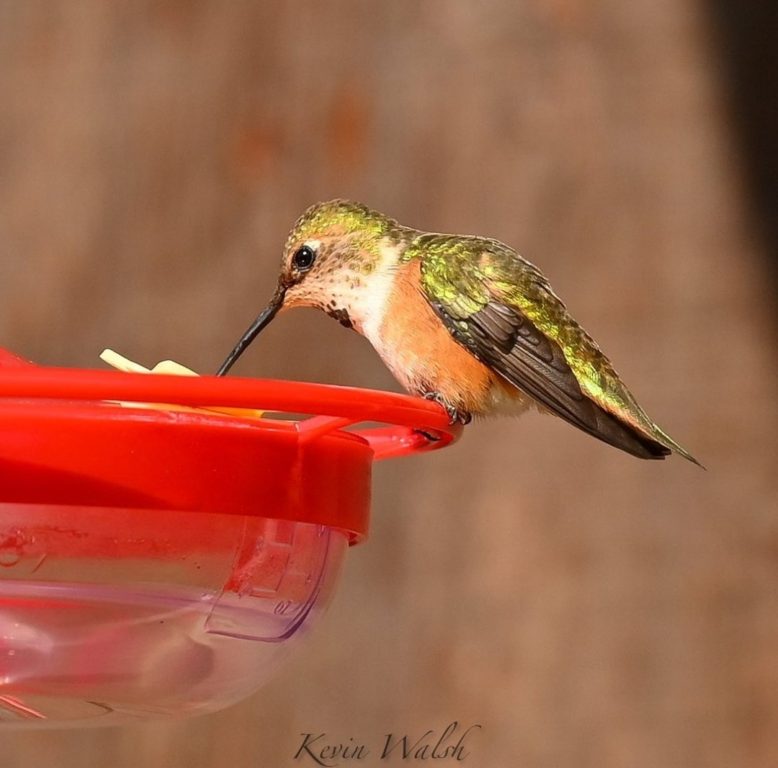
Photo by: Kevin Walsh
For those who are asking how long it might take, patience is key. Regular visitors such as Ruby-throated hummingbirds, along with their less common counterparts, take a few weeks to consistently recognize and visit new feeder locations.
Hummingbirds that have established a routine with existing feeders require several weeks to integrate a new feeder into their foraging pattern.
To get hummingbirds to discover your feeder sooner, there are some tried-and-true methods to attract them. The sight of a feeder alone might not be enough to lure them in. Hummingbirds recognize the color red as a signal for nectar, so using a red feeder without any yellow parts as the yellow can attract bees, will improve your chances.
Read my article: Red Hummingbird Feeders: (Essential or Optional)
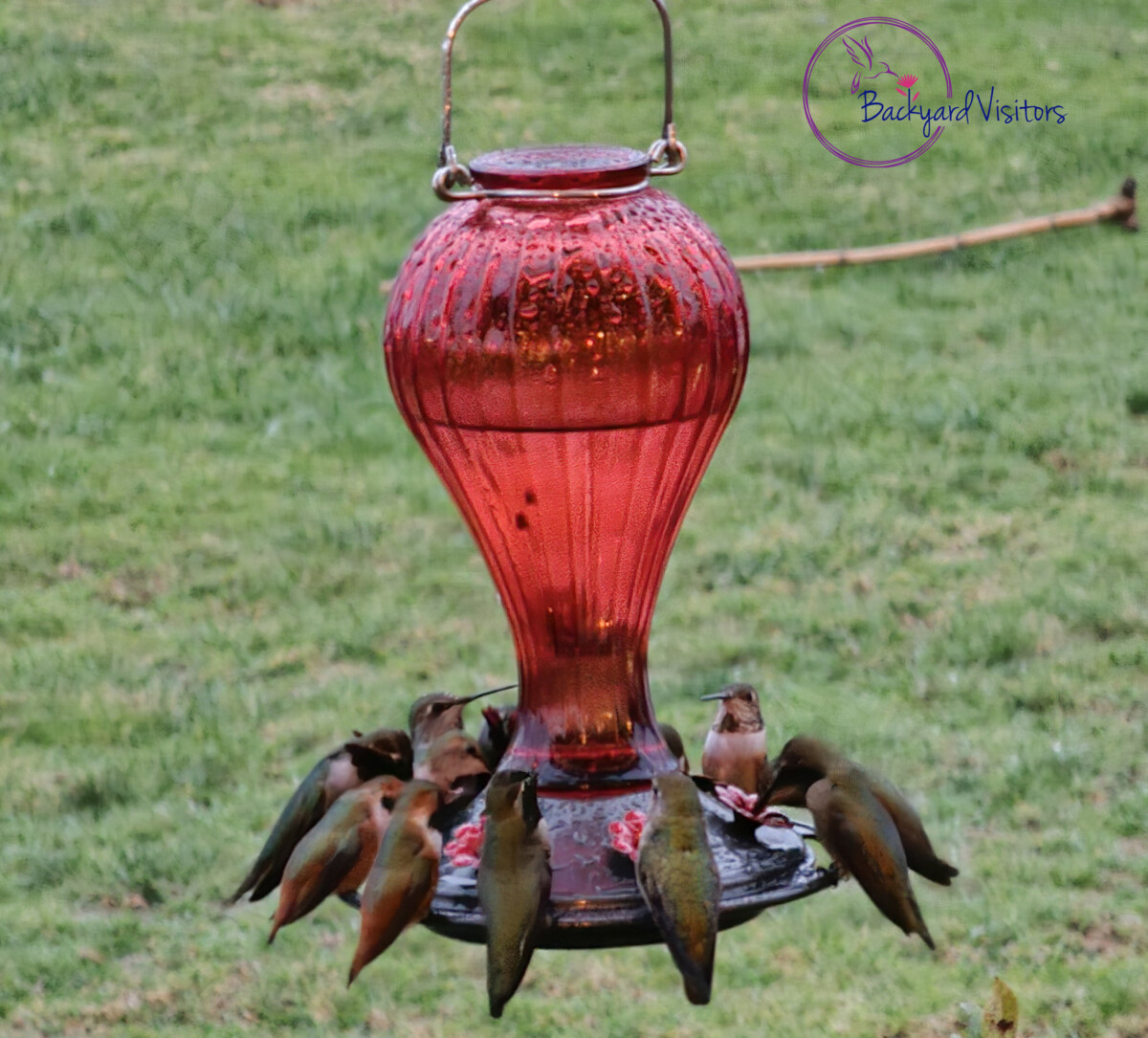
My recent addition of a red glass hummingbird feeder has been a favorite in my backyard.
Even hanging a red ribbon nearby or planting red flowers helps signal to hummingbirds that your garden is an excellent stomping grounds for nectar food sources.
The cleanliness and quality of your hummingbird feeder play a pivotal role. A clean feeder with fresh nectar (1:4 ratio of sugar to water) is more likely to draw birds repeatedly.
Be mindful of the changing seasons. If you are setting up a new feeder in the spring, do it a few weeks before hummingbirds are expected to return from their wintering grounds.
The predicament that some hummingbird enthusiasts encounter who claim to have their hummingbird feeders out for months and are still unable to attract any birds will need to consider the location, the feeders visibility, are they away from predators and safely sheltered from harsh weather and is there fresh nectar?
It is worth noting that the presence of other birds or wildlife may deter hummingbirds from venturing to your feeder.
Ultimately, the question is not, “How long does it take to find a new feeder?” but rather, “How do you maintain a space that is continuously inviting to hummingbirds?” Keep feeders clean, nectar fresh, and integrate natural attractants like native flowers.
It is a labor of love that requires adjusting and patience, however the reward of brilliant, darting hummingbirds at your feeders is inarguably worth the effort. Whether it takes a matter of days or several weeks, rest assured that with the right approach, your feeders will soon become a buzzing hotspot for these enchanting creatures.
Do Hummingbirds Recognize New Hummingbird Feeders Quickly?
As an aficionado dedicated to the study and appreciation of hummingbirds for over a decade and a half, I have meticulously observed how these delightful creatures interact with their environment, particularly when it comes to feeders.
One intriguing question that I am often asked is, “Do hummingbirds find feeders promptly when introduced to a new sight-line?” With my experience, I have learned that hummingbirds indeed have a keen eye and recognize new hummingbird feeders, but the time it takes varies depending on several factors.
The Ruby-throated hummingbird, a prevalent species that populates much of North America, are vibrant hummers known for their keen memories and are quite adept at locating and returning to favorable feeding spots season after season.
If you have put out a new feeder, the Ruby-throated hummingbird, as well as other hummingbird species, will acknowledge its presence within a few hours to a couple of days. An essential element here is the visibility and accessibility of the feeder, which significantly impacts how quickly it is found.
Many hummingbirds enthusiasts often ponder on whether hummingbirds recognize feeders immediately as a source of sustenance or merely approach them out of curiosity. Contrary to what some might think, hummingbirds do indeed find feeders out of both recognition and instinctive quest for nectar.
However, introducing a feeder to your garden does not guarantee immediate hummingbird visitors. These tiny aviators are also influenced by migratory patterns, abundance of natural food sources, and the presence of other hummingbird feeders in the vicinity.
To ensure that your quest to attract hummingbirds quickly is successful, it is essential to understand that placement is paramount. Locate your new hummingbird feeders in a spot that is easily visible, near a natural habitat, and away from predators.
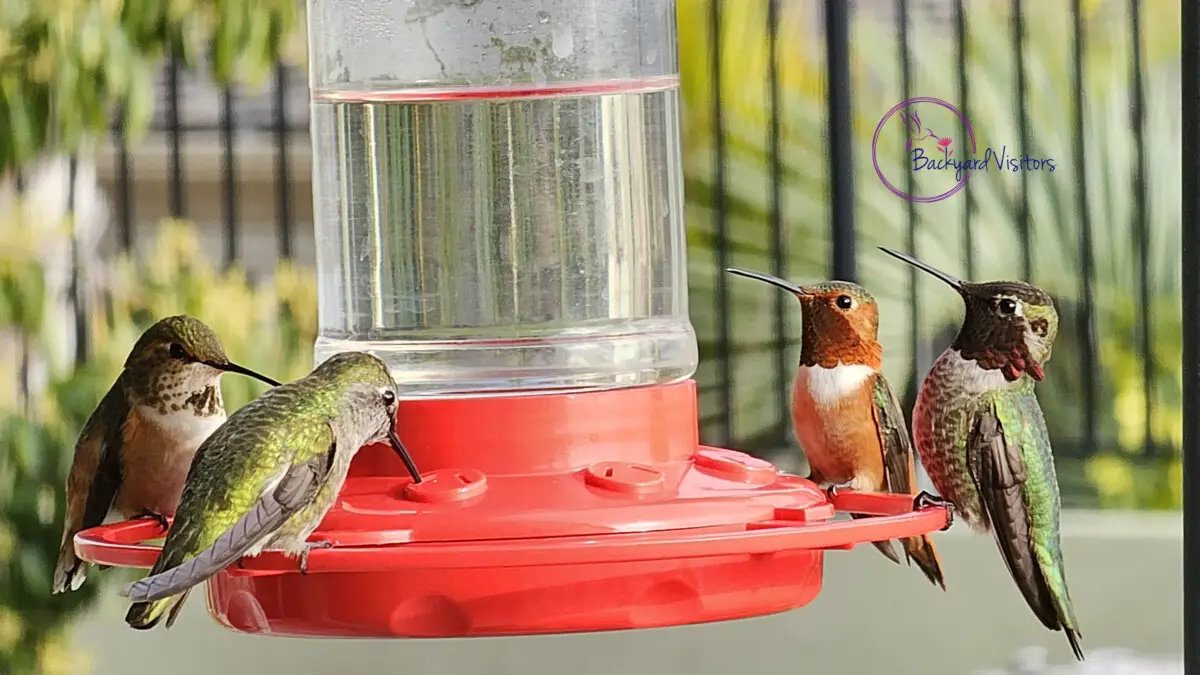
Incorporating flowers that attract hummingbirds help them recognize and are drawn to the area. Always bear in mind that feeders have not become part of the hummingbird’s environment until they have been explored and accepted by these discerning flyers.
In terms of “how long does it take” for hummingbirds to find a new feeder, one must consider the local hummingbird population. If hummingbirds are abundant in your area, the likelihood of them finding and frequenting your feeder increases, happening quickly.
In contrast, if hummingbirds are scarce or migratory patterns have yet to bring them your way, it could take a little longer. It is also worth noting that different hummingbird species exhibit varying degrees of curiosity and caution. Some may dart to a new feeder with great enthusiasm, while others take a more measured approach, carefully scoping out the area before indulging.
Nevertheless, rest assured that hummingbirds do find feeders with impressive regularity, provided they are properly maintained and stocked with fresh, dye-free nectar.
Read my article: The One Thing You Need to Eliminate From a Hummingbird’s Diet
When hummingbirds recognize your garden as a reliable source of food, they will not only visit your feeder frequently but potentially bring along their friends and offspring, creating a vibrant hummingbird haven.
Through patience and careful observation, anyone can experience the joy of these birds discovering a feeder for the first time and returning day after day.
To conclude, the question is not simply whether hummingbirds recognize new hummingbird feeders quickly – it is a matter of creating an inviting environment that caters to their needs and preferences.
With the right preparation, your feeders will become a stunning hub of activity, teeming with the delightful buzz and iridescent flashes of feeding hummingbirds. Remember, attracting hummingbirds to a new feeder is a blend of science, art, and patience, which when mastered, offers a richly rewarding experience for any birding enthusiast.
Attract Hummingbirds: Hummingbird Feeder Placement and Care
As a dedicated hummingbird lover, I have many enthusiasts ask, “How long does it take hummingbirds to find a new feeder?” and “Do hummingbirds recognize new hummingbird feeders quickly?”
The answer is not a straightforward one, as it is contingent upon several factors, which are essential in understanding how to attract these enchanting birds. The journey to attract hummingbirds to your yard requires patience, observation, and dedication to maintaining a hospitable environment tailored for hummingbirds.
Hummingbird feeders should be placed in a location that mimics the natural environments of hummingbirds. Hummingbird feeder placement that is among flowering plants or in a space that provides a clear line of sight for these birds to spot the feeder is important.
Visibility is prime because hummingbirds are attracted to bright colors, especially red, which often signifies a food source. When deciding where to place your bird feeder, consider areas within your yard that have a high visibility ratio.
Attracting hummingbirds is not just about the placement, but also about the feeder’s care. Feeder ports need to be kept clean to prevent the growth of mold and bacteria that harms the hummingbirds.
They should be cleaned regularly, and hummingbird nectar inside should be fresh and free from contamination. The nectar mimics the natural sucrose content that hummingbirds find in flowers, generally at a ratio of 4 parts water to 1 part sugar, without any dyes or additives.
Read my article: Forget Commercial Nectar, Try Making Homemade Nectar
Patience is key when waiting for hummingbirds to discover your offerings. After setting up feeders, the process to attract hummingbirds varies from just a few days to several weeks, sometimes longer. Weather, time of year, and local hummingbird populations will determine how quickly they visit your new feeder.
The availability of natural food sources also influence their visitation patterns to bird feeders in your yard. Once a hummingbird has discovered your feeder, word quickly spreads in the hummingbird community, and you will see an increment in activity.
To optimize your effort for attracting hummingbirds, remember that the hummingbird diet also includes insects and small arthropods for protein.
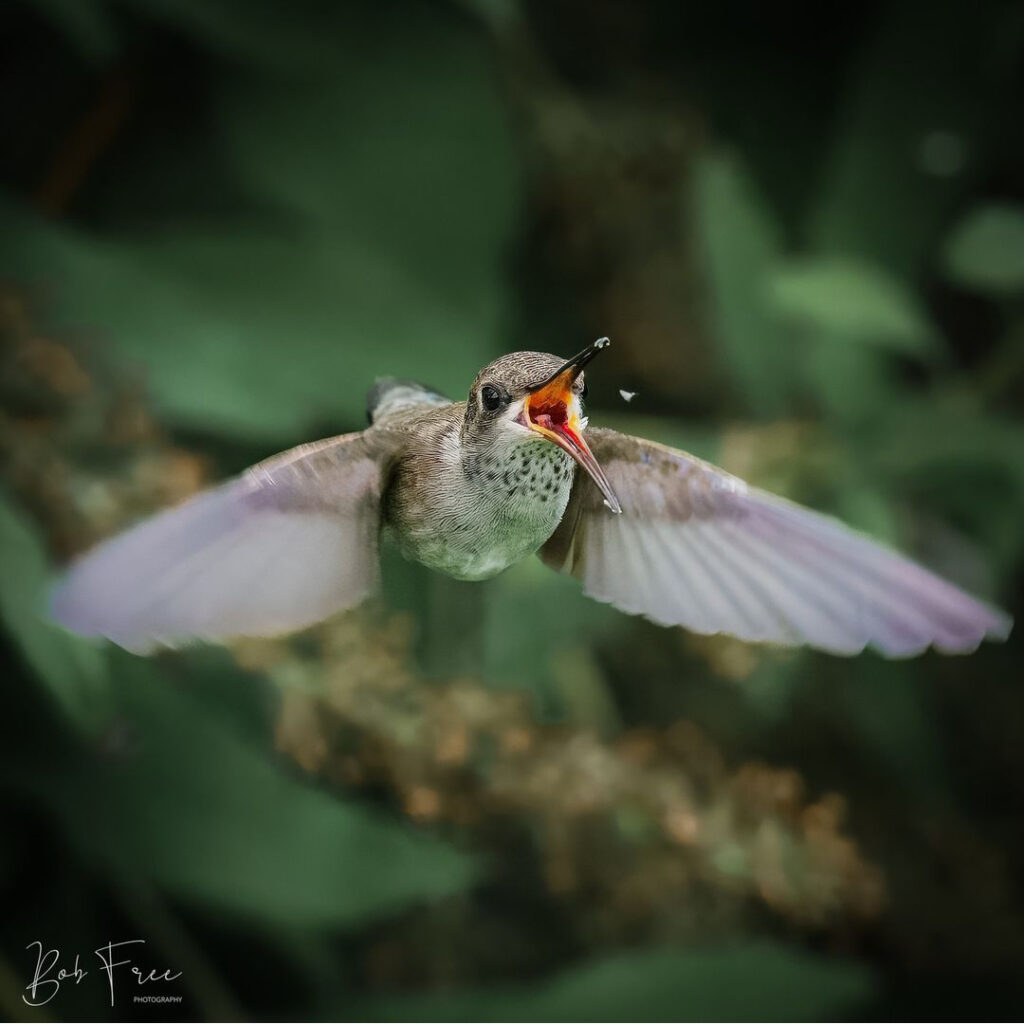
Photo by: Bob Free
Creating a garden that supports a diverse insect population makes your yard even more attractive to these birds. Furthermore, providing water sources, such as misters or shallow water basins specifically for hummingbirds, complement your feeders and help to create an ideal habitat.
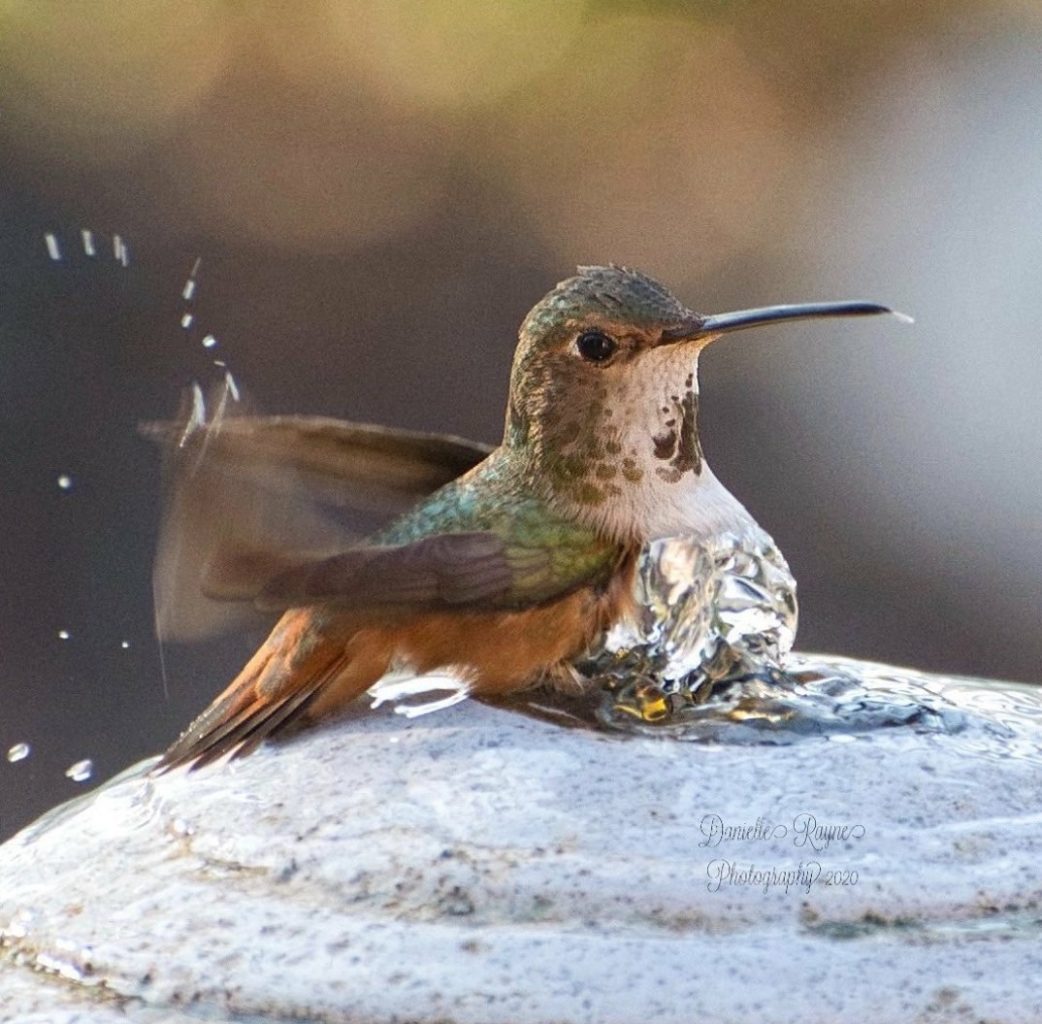
When we discuss how to attract these birds, it is important to consider the seasons. During the migration season, establishing hummingbird feeders play a vital role in supporting their energetic demands.
Determining the best times to put out feeders and when to perform maintenance is critical. In the spring, hummingbird feeders are set up in anticipation of their arrival and kept up until the late fall to support late migrators.
For more information about hummingbird migration in you state read my articles.
Let’s not forget that the types of hummingbird feeders you offer play a significant role as well. Feeders come in various shapes and sizes, with differing numbers of feeder ports. Some have perches that allow them to rest while they feed, while others are designed to also deter bees and ants that can be attracted to the sweet nectar. Experimenting with different feeder styles and locations can determine what works best for you and the hummingbirds.
For those eager to welcome hummingbirds into their lives, remember the importance of strategic feeder placement and meticulous care. It is these elements that will ultimately contribute to a flourishing hummingbird haven in your yard.
With a touch of patience, you will soon marvel at the sight of these exquisite creatures darting from feeder to feeder, bringing your garden to life with their iridescent beauty and aerial acrobatics.
FAQs
Q: How long does it typically take for hummingbirds to find a new feeder?
A: The time it takes for hummingbirds to find a new feeder widely varies. It generally ranges from a few days to several weeks, or even months, depending on factors like the local hummingbird population, visibility of the feeder, the presence of other feeders in the area, and the time of year.
Q: Do hummingbirds recognize new feeders quickly?
A: Hummingbirds do have the ability to recognize new food sources, including feeders, especially if you use red feeders or hang red ribbons nearby to attract them. However, the time it takes them to recognize, and start visiting a new feeder varies from a few hours to several days.
Q: What can I do to attract hummingbirds to my new feeder more quickly?
A: To attract hummingbirds quickly, use a red feeder without yellow parts, keep the nectar fresh using a 1:4 sugar-water ratio, hang the feeder in a visible and safe location, and add natural attractants like native flowers nearby. Properly cleaning and maintaining the feeder is also crucial.
Q: Why haven’t hummingbirds visited my feeders after several months?
A: If hummingbirds have not visited your feeders after an extended period, consider factors such as feeder visibility, location, predator presence, and the freshness of the nectar. Evaluate other potential deterrents like other birds or wildlife and revise your strategy if needed.
Q: Does the type of hummingbird feeder matter to attract these birds?
A: The type of feeder makes a difference. Hummingbirds are attracted to bright colors such as red. Different features such as perches or bee guards also play a role in the feeder’s attractiveness and functionality. Experimenting with various feeders help you determine what attracts hummingbirds to your yard most effectively.
Remember, attracting hummingbirds often requires patience and trial and error. Creating a habitat that is both attractive and safe for these birds will increase your chances of enjoying their presence in your garden.
Check out my other posts on Hummingbird Questions
Happy Hummingbird Watching!
Backyard Visitors participates in affiliate programs which compensate us for referring traffic.

